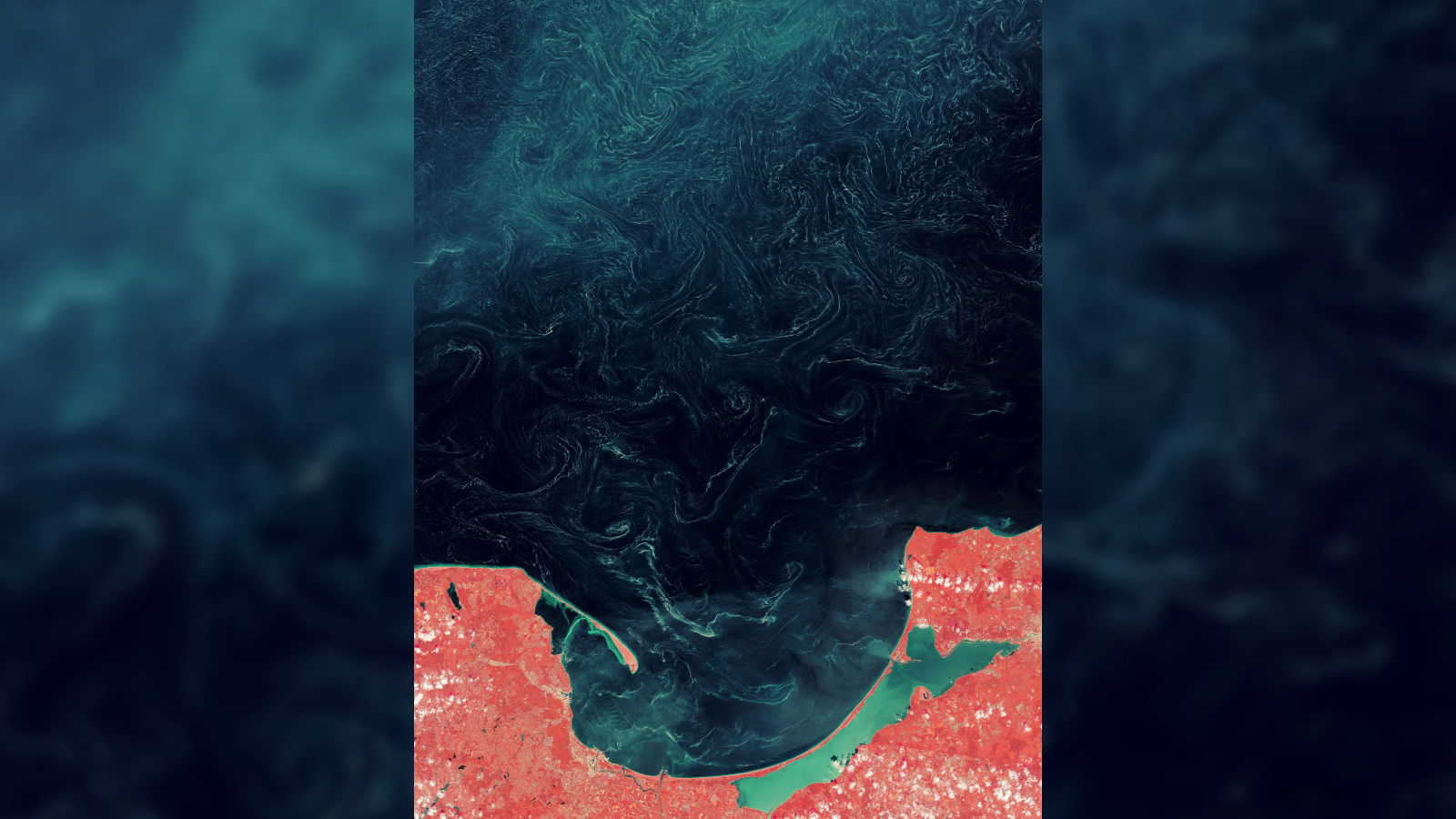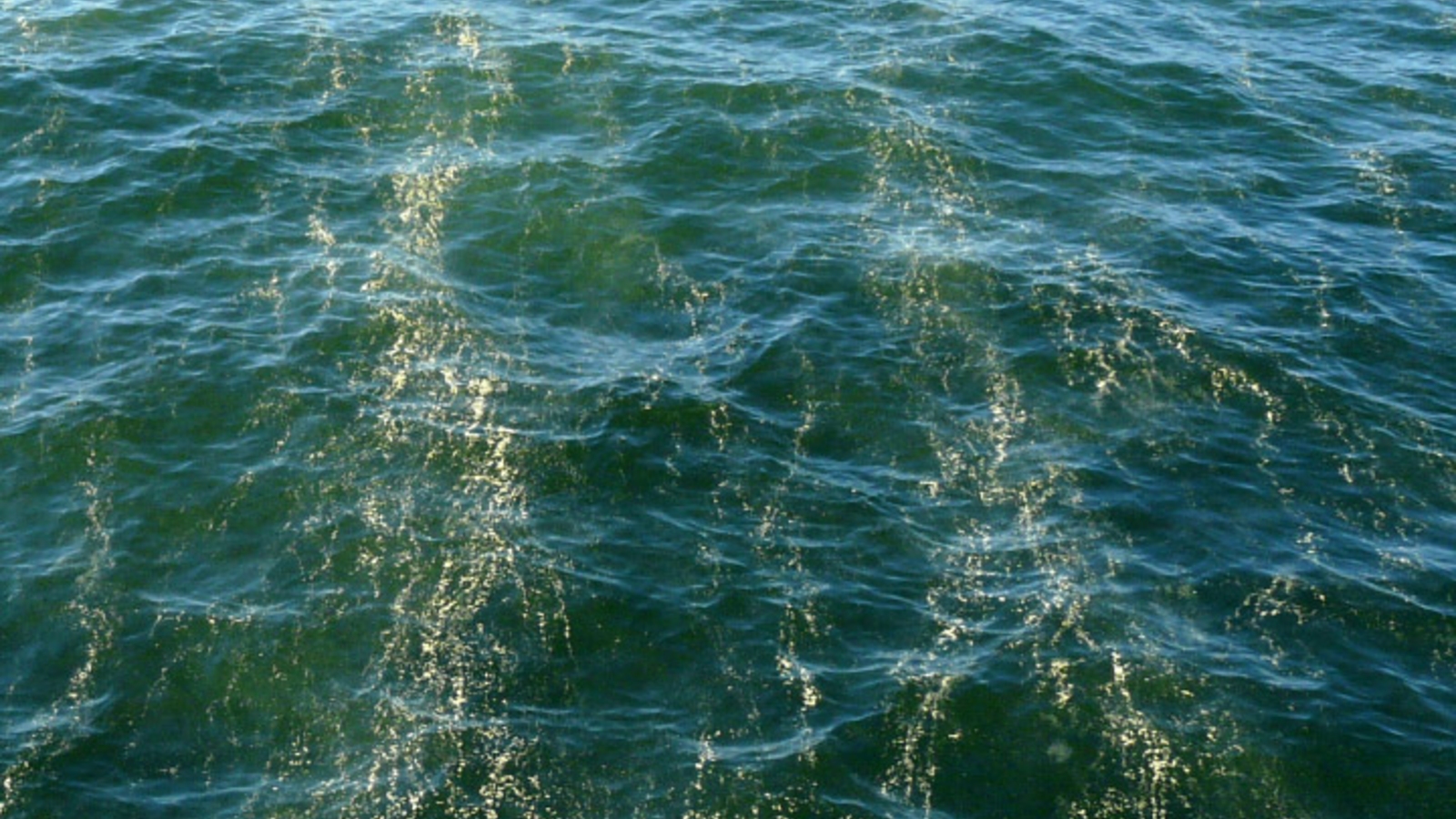QUICK FACTS
Where is it? Gulf of Gdańsk, Poland [54.49454424, 19.056185969]
What’s in the photo? Slicks of organic material swirling on the ocean surface
Which satellite took the photo? European Space Agency’s Sentinel-2A satellite
When was it taken? May 16, 2018
This striking false-color satellite image shows masses of organic material swirling along the Polish coastline. When the photo was taken, the composition of these giant swirls was unknown, but surprising research has since revealed what they are made of.
In 2000, satellite imagery revealed the presence of previously unknown, near-invisible films of organic material, or “slicks,” periodically appearing on the ocean surface in and around the Gulf of Gdańsk — a section of the Baltic Sea surrounding the city of Gdańsk on Poland’s north coast.
The best example of this intriguing phenomenon occurred in May 2018, when the swirls reached more than 130 miles (210 kilometers) from the coastline, according to NASA’s Earth Observatory. The photos of this event (see above and below) have been altered to highlight the wavelengths of light coming from the mystery substance, which also makes the land surrounding Gdańsk appear red.
Scientists were initially unsure what these slicks were made of. They formed similar patterns to photosynthetic algae blooms that get swirled across the ocean surface by wind and ocean currents. However, such blooms are normally clearly visible to the naked eye in most satellite photos, and often emerge several months earlier than when the slicks kept appearing.
Some researchers later proposed that the material could be “sea snot” — a slimy substance produced by some plankton, which can stick to boats and along the coastline. However, locals have never reported any sea snot outbreaks in the area.
Related: See all the best images of Earth from space

But during a 2023 study into the slicks, researchers finally realized what they were made of: tree pollen.
Using data collected by NASA’s Terra and Aqua satellites, the study team revealed that similar slicks had appeared 14 times between 2000 and 2001. The timing of these slicks, which often appear between May and June, closely matched the pollen cycle of pine trees (Pinus sylvestris), suggesting that the trees’ pollen was being blown out to sea and settling on the ocean’s surface.
A further analysis of the light reflected off the slicks confirmed this hypothesis.
Ocean pollen
Pine trees are the most common tree in Poland, making up around 60% of the country’s forests, which in turn cover one-third of the nation’s landmass, according to State Forests Poland.
Previous research had already shown that the pollen of these trees could end up in the Baltic Sea. But until the 2023 study, there was no indication that this was happening on such a large scale, according to the Earth Observatory.

Due to pollen’s high organic carbon content, researchers believe follow-up studies are needed to fully assess the role it plays in marine ecosystems across the globe.
“If we can track pollen aggregation in different places, this may provide useful data for fisheries studies,” Chuanmin Hu, an optical oceanographer at the University of South Florida who led the 2023 study, previously told the Earth Observatory.
The amount of pollen reaching the world’s oceans is also likely increasing as a result of human-caused climate change: A 2021 study in North America revealed that annual pollen levels increased by 21% between 1990 and 2018, and that the pollen season lasted for around 20 days longer on average. This is the result of increased atmospheric carbon dioxide, which allows plants to produce more pollen — and is happening around the world.
